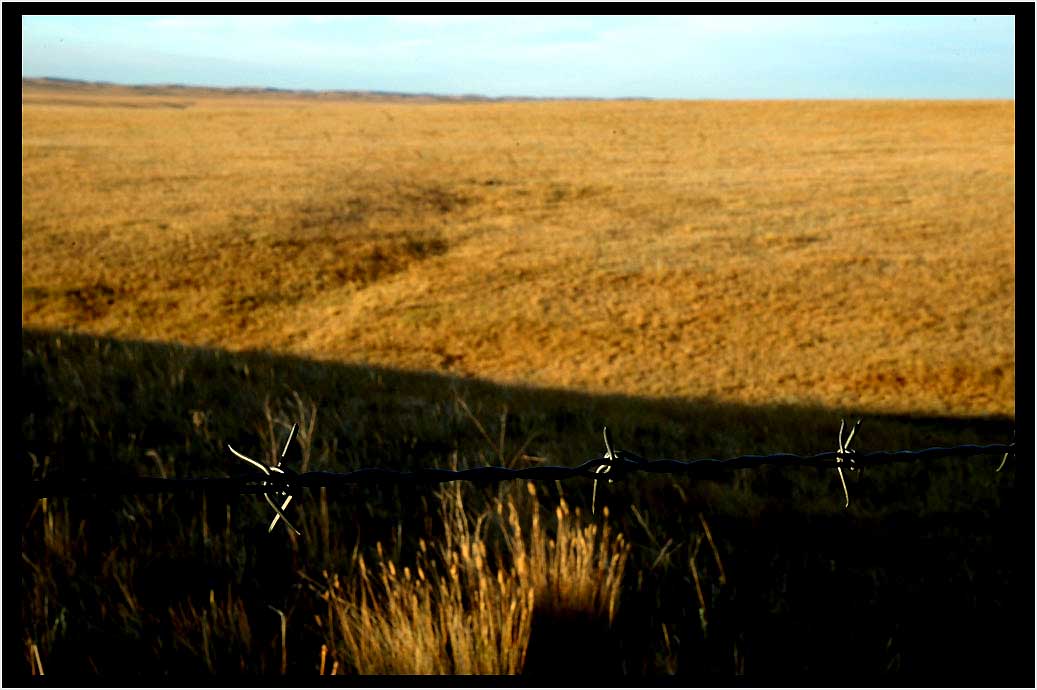
Barbed-wire Prairie . . . On the road in the American Northwest.

Barbed-wire Prairie . . . On the road in the American Northwest.
Barbed-wire Prairie & Overgrazing
Perhaps more than any other innovation, I think barbed-wire has
made the current style of grazing possible. When animals are confined
and not carefully shepherded from place to place in a rhythmic way
(as in many places to this day in the Alps), overgrazing is the result.
This culminates in a Cheatgrass-Sage-Dirt landscape (as I call it) as far
as the eye can see. In this way, the door of habitat destruction is left
wide open to extremely tough and determined alien species like Spotted
Knapweed and Leafy Spurge, which in turn sets up a devil's loop of more
habitat fragmentation and loss.
I would not place the responsibility for overgrazing primarily on the
ranchers. They are just trying to make a living under very difficult conditions.
I think the problem has its source in yet another kind of fragmentation, this
time between the in North America relatively small agricultural community
and the wider culture. Face it, meat in the store bears for the buyer no
relationship to the rancher or the cow in field. This is fragmentation of the
most insidious kind, because it forces prices down to the point that the rancher
has no other alternative than to keep more and more animals on a given
parcel of land. To say that this is just the way markets work is, in my opinion,
highly irrational. For health of the land and health of a culture are most
certainly inextricably linked. And yet the destruction of both passes me by,
mile after mile after mile.
Who, we may ask, wants this? The ranchers I speak to don't. Consumers
have no awareness of the problem. So, the question, it seems to me, is
what is the source of this kind of all-pervasive fragmentation?